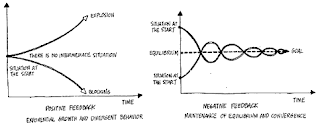Semiology came from the Greek word 'semeion'. which means sign. It is an attempt to create a science of study of sign systems and their role in the construction and reconstruction of meaning in media texts. Semiology concentrates primarily on the text itself and the signs and codes that are contained within it.
Semiotic is the study if sign process (semiosis), or signification and communication, signs and symbols, both individually and grouped into sign system. It includes the study of how meaning is constructed and understood. In simple sentences. Semiotic is the study of sign.
There are two major traditions in European semiotics: F. de Saussure (Swiss-French), semiology; and C.S. Peirce (Anglo-American), semiotics. Saussure's approach was a generalization of formal, structuralist linguistics (The scientific study of language and its structure, including the study of morphology, syntax, phonetics, and semantics.); Peirce's was an extension of reasoning and logic in the natural sciences.
Daniel Chandler, Basic of Semiotics:
Signs take the form of words, images, sounds, odours, flavours, acts or objects, but such things have no intrinsic meaning and become signs only when we invest them with meaning. 'Nothing is a sign unless it is interpreted as a sign', declares Peirce (Peirce 1931).
A sign is composed by two-part model:
a 'signifier' (signifiant) - the form which the sign takes; and
the 'signified' (signifié) - the concept it represents
A sign is a combination of a signifier with a particular signified. The same signifier (the word 'close') could stand for a different signified (and thus be a different sign) if it were on a push-button at a computer window ('push to open door').
Iconic is how close the sign is to ' the real thing', how constrained a sign represent an object or a thing, and photographic portrait is typically iconic.
Arbitrary (aka symbolic) is the opposite of iconic. Arbitrary is how far away a sign is from "the real thing', how unconstrained a sign represent an object or a thing. A person's name bears little physical resemblance to them but is less arbitrary than a nickname or an employee number.
Denotation is a direct meaning or set of meanings of a word or expression, as distinguished from the ideas or meanings associated with it. What it actually is. (ie ‘red’ denotes a certain colour, a ‘car’ denotes a vehicle for moving people and things around, the McDonalds golden arches denote a fast-food restaurant, the twin towers denoted a place of work in New York). Denotation is the 'surface' meaning. Similar to signified. Denotation refers to the literal meaning of a word, the 'dictionary definition'.
Connotation:the associated or secondary meaning of a word or expression in addition to its explicit or primary meaning. (ie ‘red’ connotes danger/passion/communism, a ‘car’ connotes freedom, the McDonalds arches can connote ‘americanisation’). This is very often cultural and can depend on context. Connotation represents the various social overtones, cultural implications, or emotional meanings associated with a sign.
The following extract from his essay 'Rhetoric of the Image', Roland Barthes demonstrates the subtlety and power of connotation in the context of advertising.

For an example, the name ' Hollywood' connotes such things as glitz, glamour, tinsel, celebrity, and dreams of stardom. The name 'Hollywood" denotes an area of Los Angelas, worldwide known as the center of America movie industry.
Myth: Roland Barthes in ‘Mythologies’ explores this further by looking at the mechanisms through which meanings are produced and circulated. He is interested in ‘how’ things mean. During the class, our lecturer had say that myth= denotation+connotation.
Barthes myths were the dominant ideologies of our time. In a departure from Hjelmslev's model Barthes argues that the orders of signification called denotation and connotation combine to produce ideology - which has been described (though not by Barthes) as a third order of signification (Fiske & Hartley 1978; O'Sullivan et al. 1994). In a very famous example from his essay 'Myth Today' (in Mythologies), Barthes illustrates this concept
References:
Chandler, Daniel (1994): Semiotics for Beginners [WWW document] URL http://www.aber.ac.uk/media/Documents/S4B/semiotic.html [9 June 2012]





